Where to find rare Pokémon in Pokémon Go
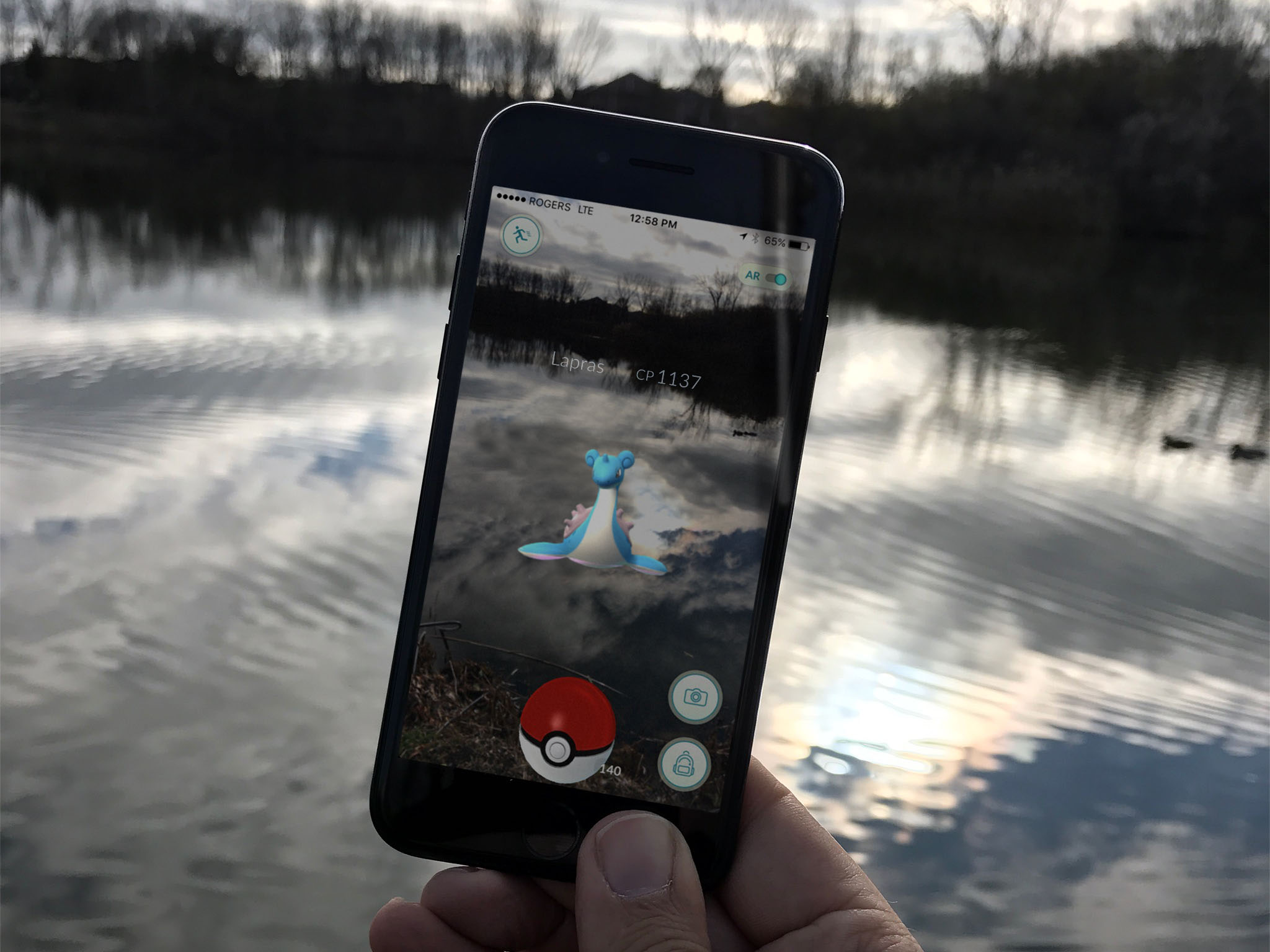
Before you can catch any Pokémon in Pokémon Go, you first have to find them. And that can be easier said than done, especially for rare Pokémon like Lapras, Dratini, Ampharos, Aerodactyl, and more. It took a long time for me to complete my Gen I Pokédex, and since then, Pokémon Go has added most of four more generations. Fortunately, there are lots of tools to help you find and catch 'em all!
New: Latest Pokémon Go Updates | Next Pokémon Go Event
Hot: Best movesets | Best Power-Ups | Find rares | Catch bonuses
Guides: Pokémon Go tips + tricks | Pokémon Go cheats
Where do you find different types of Pokémon in Pokémon Go?
Everywhere! At first, it seemed like some Pokémon were only found in certain places or environments — called "biomes". Ever since the Pokémon Go Bonus Event, when more frequent and diverse spawns were introduced, that hasn't been absolutely true.
Some Pokémon might still be more common in some areas — water Pokémon might still best be found near the water and electric Pokémon in electric biomes but, theoretically, any Pokémon can now spawn anywhere.
I live in a suburb of a relatively small northeastern city and I've had Snorlax spawn at the gas station and the park, Gyarados and Lapras along the side of not-to-busy roads, Porygon spawn at the mall, Tangela as the airport, and Dragonite at Starbux. Seriously.
Master your iPhone in minutes
iMore offers spot-on advice and guidance from our team of experts, with decades of Apple device experience to lean on. Learn more with iMore!
If you live in or go to a big city, you'll significantly increase your odds of seeing Tyranitar spawn but, otherwise, it's more about putting time in and paying attention.
Read how catch rare Pokémon in Pokémon Go
How do you find the rare Pokémon in your area?
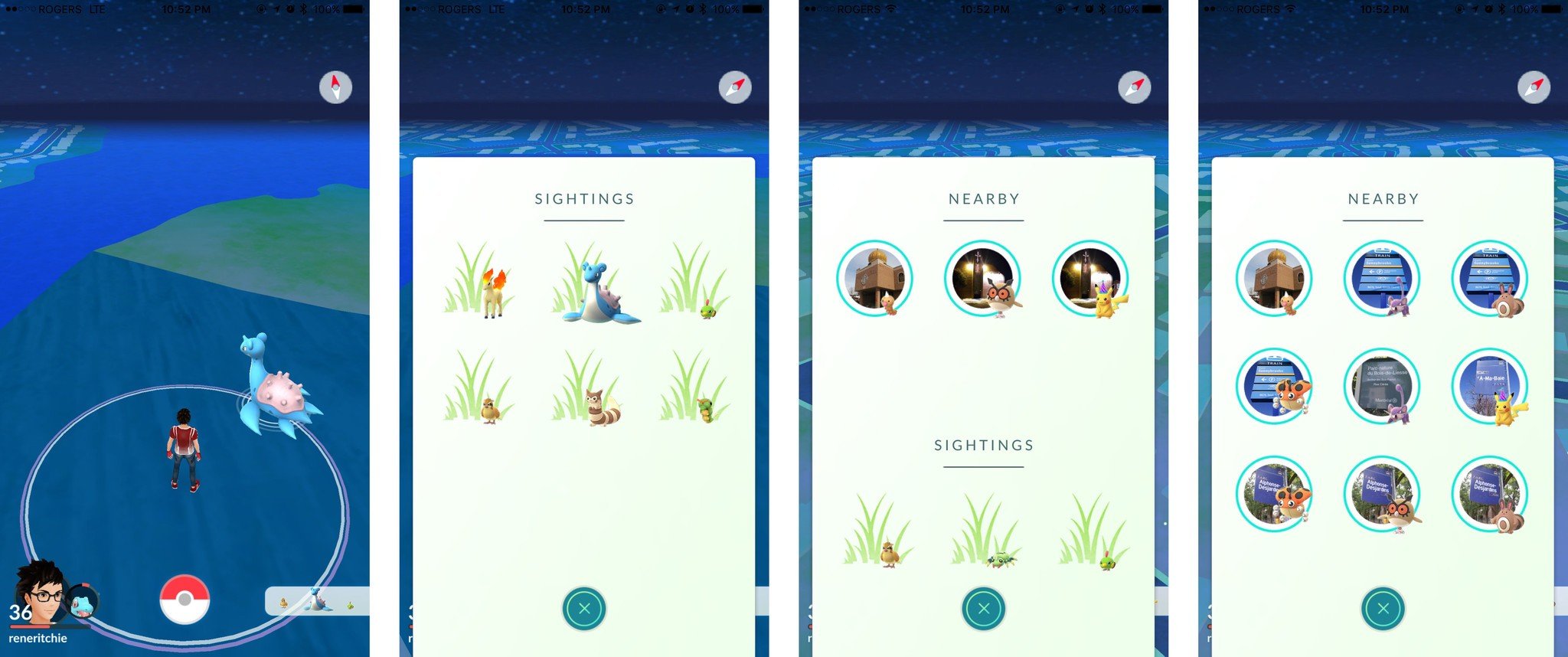
Pokémon Go now includes two distinct forms of detecting the Pokémon in your immediate vicinity. The first is Nearby, which shows you Pokémon hanging around the PokéStops in your immediate vicinity. The second is Sightings, which shows you the Pokémon hiding anywhere close by, ready to spawn.
The Pokémon tab at the bottom right of your travel screen shows you up to three Pokémon. Tap on it, and you'll see up to nine. Depending on what's in your area, they'll be all Nearby, all Sightings, or a mix of both.
Neither Nearby or Sightings shows you every Pokémon around you. If there are a lot of PokéStops in your area and a lot of Pokémon loitering at those Stops, Nearby will only show you one or two from each Stop. Same with Sightings.
Theoretically, rare Pokémon will be highlighted so you don't miss them. Theoretically.
How do you track using 'Nearby' in Pokémon Go?
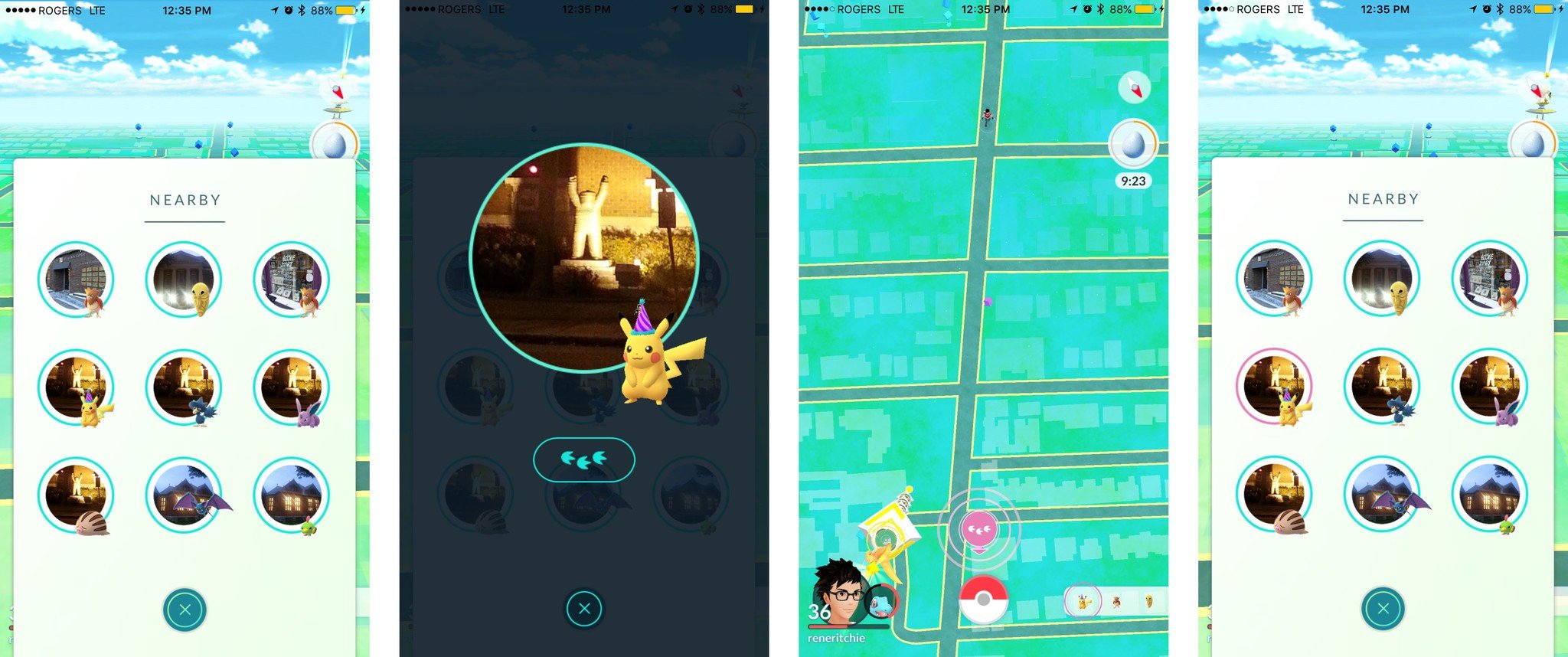
"Nearby" is the new, default tracking system in Pokémon Go. It shows up whenever you're even remotely close to a PokéStop and then shows you which Pokémon are hanging out around that stop, just waiting to spawn. If you see one you want, here's how to track it down.
- Tap the Pokémon Tab at the bottom right of the screen.
- Look at the top, beneath the NEARBY header.
- Tap the Pokémon you want to track.
- Tap the Footprints button to start tracking.
The map will zoom out and show you the PokéStop where that Pokémon is located and hang a Footprints flag over it.
If you lose track of the Pokémon, simply pan around. You'll see the flag hanging over the PokéStop, even from a distance. If you forget which Pokémon you're tracking, just look for the highlight rings around it.
How long do you have the catch a Pokémon you're tracking?
Pokémon generally spawn for 30 minutes. On rare occasions, they may spawn for 60 minutes. Don't count on the longer time, though. If you're looking on your screen when a Pokémon pops up on Nearby, consider 30 minutes the longest you have to get it. If the Pokémon is already on Nearby when you start playing, then you have to hustle. There's no way to tell how far into the 30 min. or 60 min. you are.
What happens if a Pokémon disappears just before you get to it?
There's no worse feeling than racing to the Pokémon you're tracking only to watch it disappear from Nearby or Sightings just before you arrive. Especially if it was in a hard-to-get-to place, late at night, cold outside, or yes to all of that.
Luckily, there's a "grace period". If you keep going to the PokéStop and you get there quickly, chances are the Pokémon will still spawn for you, even if you no longer see it on Nearby.
Yes, tenacity matters.
Why does Nearby go blank when you're driving?
Pokémon Go has a speed lock that kicks in if you're going over 35 KM/H. Not only does it prevent you from spinning PokéStops, it turns off Nearby and Sightings. It's meant to prevent people from playing Pokémon Go while driving, but sadly it effects passengers as well.
So, if the Pokémon you've been tracking disappears, don't worry. Just keep going where you're going and when you slow down and stop, within a short amount of time Nearby and Settings should return and the Pokémon should spawn. (The exact time depends on how fast you were going and for how long.)
How do you stop tracking in Pokémon Go?
You can only track one Pokémon at a time. If you try to track another, you'll stop tracking the first. You can also purposefully stop tracking at any time.
- Tap the Pokémon Tab at the bottom right of the screen.
- Tap the Pokémon you want to stop tracking.
- Tap the Footprints button to stop tracking.
There's no harm leaving tracking on since, if you get out of range, you'll simply get a message saying the Pokémon has fled. If that annoys you, though, stop tracking away!
How do you find Pokémon using Sightings in Pokémon Go?
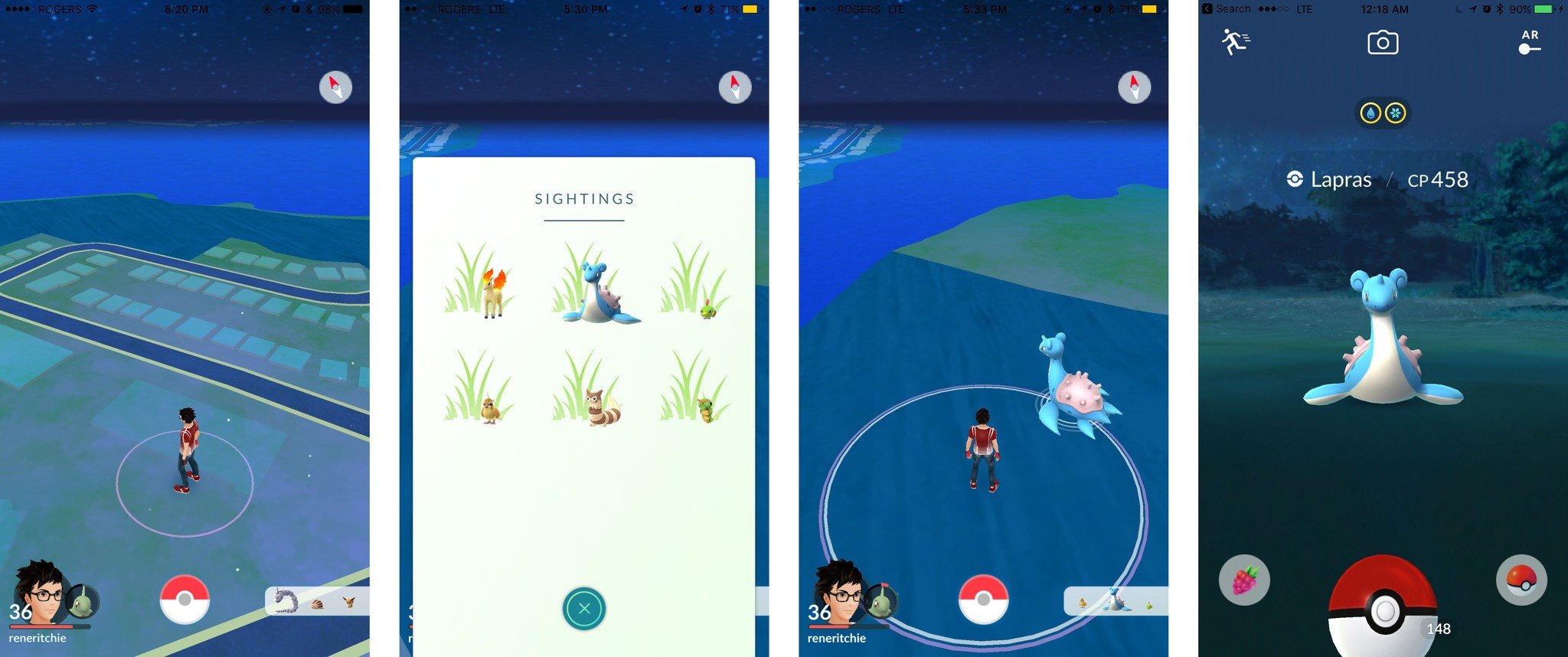
When there aren't any PokéStops in range or when you're within 200m of a spawn that isn't attached to a PokéStop, Sightings will appear. It's often below Nearby, though, so you'll need to expand the tab to see it. Rare Pokémon should pop to the top no matter what, but it's worth checking when you have time just to make sure you never miss that Snorlax lurking on the corner...
- Tap the Nearby Tab at the bottom right of the screen.
- Look towards the bottom, beneath the SIGHTINGS header.
Unlike Nearby, Sightings won't show you where the Pokémon is. (If you tap it, you'll get a polite note telling you to 'Find these Pokémon in the Wild'.)
Help! There's a Pokémon on Sightings and it can't be found!
Pokémon in Sightings aren't attached to a PokéStop the way Pokémon in Nearby are. That means they can be anywhere within 200m, and that makes finding them more of a challenge.
Here's how to hunt them down:
- Start walking.
- If the Pokémon spawns, you've found it. Catch away!
- If the Pokémon disappears from Sightings, you've gone the wrong way. Turn around!
- Walk in different directions, narrowing down the angles until the Pokémon spawns.
There are a couple of ways to make the process easier:
- Pokémon will often spawn in the same spawn points or nests — street corners, parking lots, Gyms, piers, docks, etc. — so get familiar with the ones in your area and head in their direction(s) first.
- The Silph Road has a tracker you can use to help triangulate if you need it.
Wait, what are spawn points and nests in Pokémon Go?
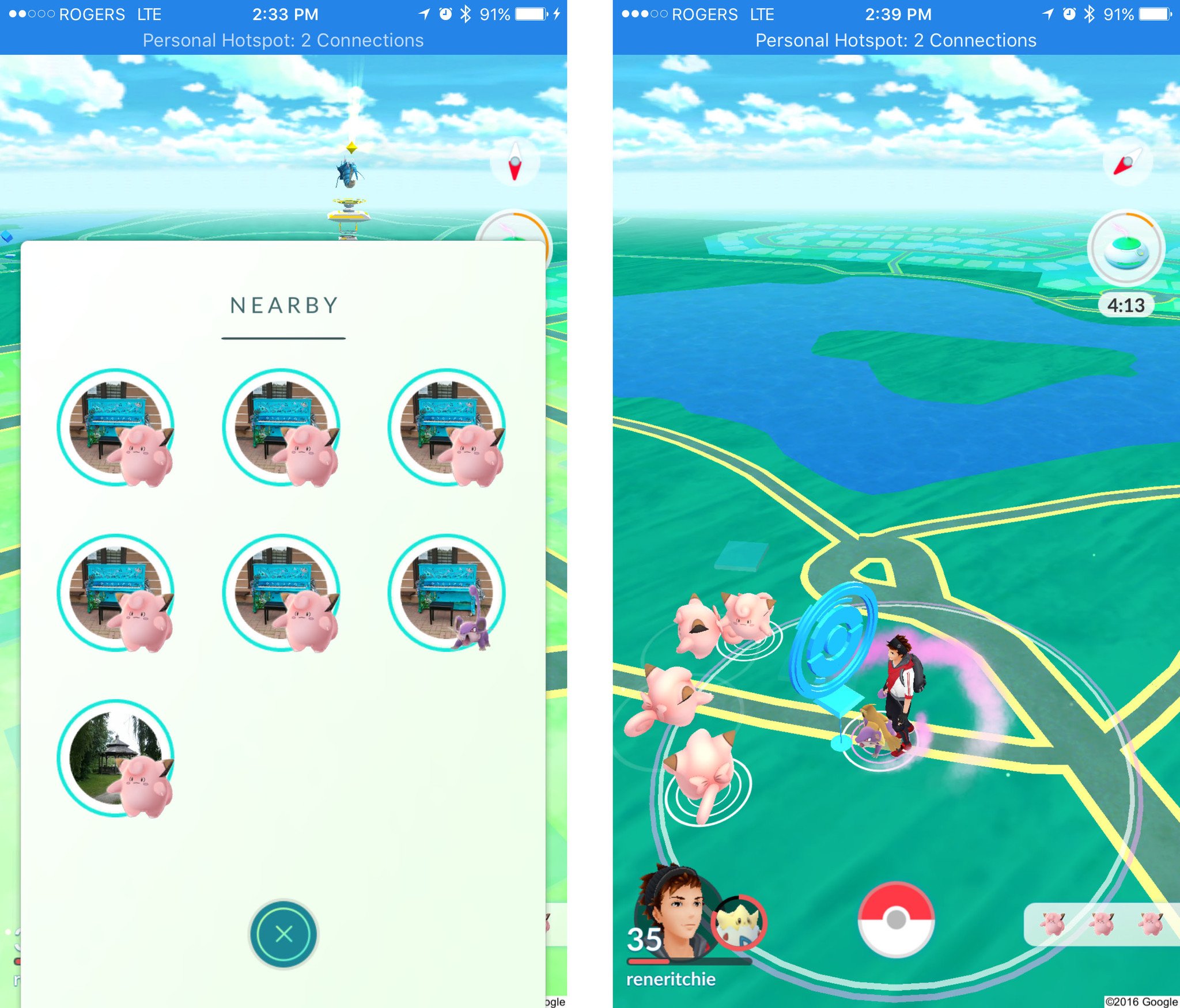
Spawn points are locations where a single or group of Pokémon tends to spawn. Many spawn points are attached to PokéStops or Gyms, but they can be anywhere — at street corners, in parking lots, near access points to waterways, etc.
If the exact same type of Pokémon spawns in significant number, repeatedly, at the same spawn point, then it's considered to be a nest. Some nests even cover multiple PokéStops and spawn points. For example, an entire park might be a nest for one type of Pokémon with up to a dozen areas that spawn regularly.
Okay, stop. How does that all work?
Only Pokémon Go's developers know for sure. Here's what's been theorized, though:
- Every so often, a spawn point "rolls" (decided at random) to determine if something should spawn.
- If the answer is yes, it determines from the spawn point's biome what Pokémon should spawn.
- If the spawn point is a nest, the nesting Pokémon has a higher probability of being spawned.
- There's a very small chance an ultra-rare Pokémon might spawn, detached from the biome, over-riding the typical spawn.
- If a spawn point has multiple Pokémon, the same procedure is repeated for all of them.
And what are the biomes?
Again, only Pokémon Go's developers know for sure. Some have also changed with the advent of Gen 2. A few have been colloquially identified as follows — along with more recent changes:
- Common: Pidgey, Rattata, Weedle — Sentrat, Hoothoot
- Water: Magikarp, Slowpoke, Psyduck, Tentacool, Staryu, Goldeen, Squirtle, Chinchou.
- Electric: Magnamite, Voltorb
- Mountain: Clefairy
Ultra-rare spawns will sometimes be slightly more common in certain biomes. For example, Dratini at water spawns, Lavitar at mountain spawns.
Are there any lists of all the spawn points and nests?
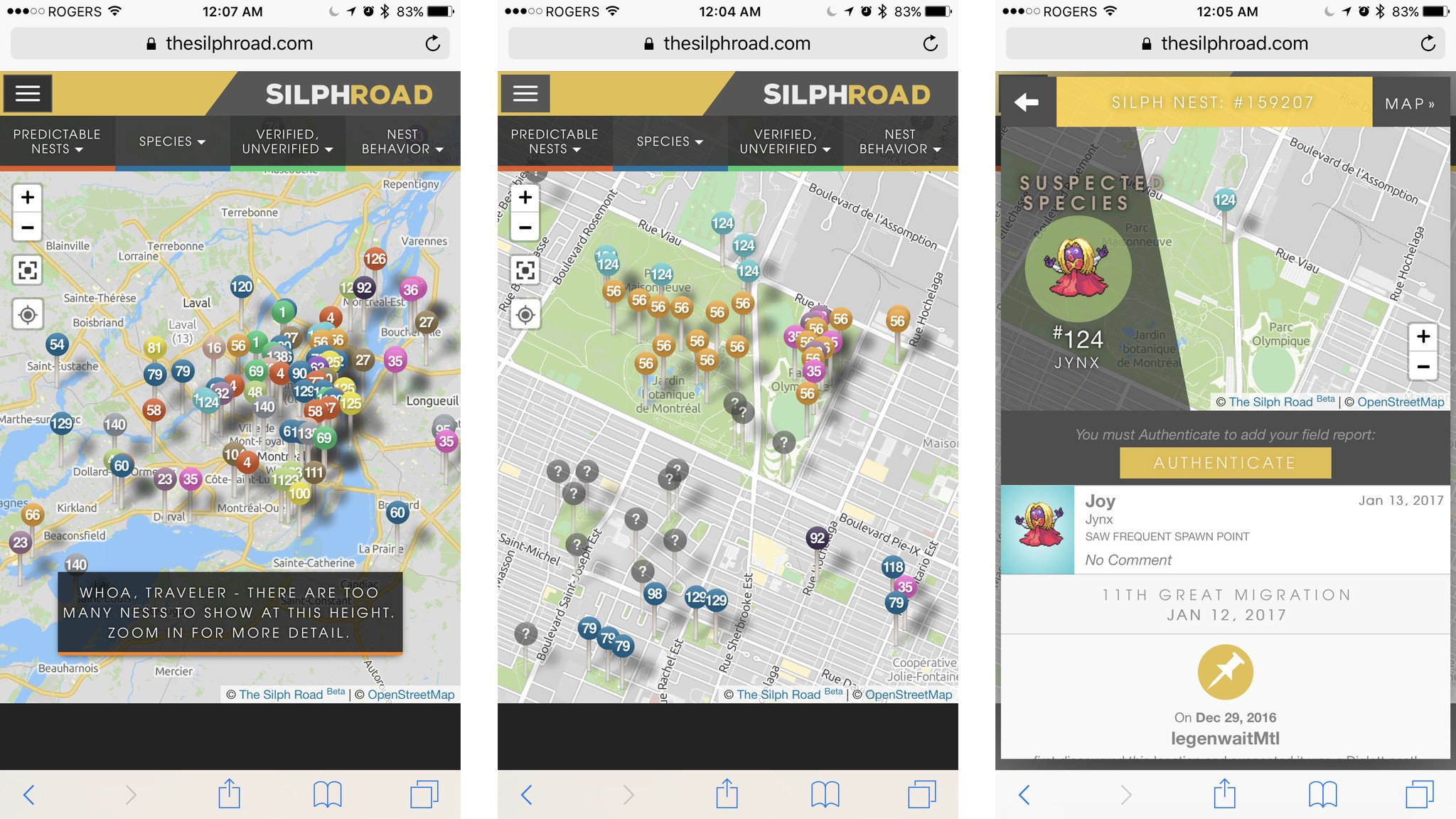
Yup! The Sliph Road maintains the most popular crowd-sourced nest atlas on the web.
If you consider crowdsourcing to be outside the bounds of fair play, you can find most of your local nests on your own simply by keeping track of any out-of-the-ordinary spawns.
Any cluster spawns of 2 or more Pokémon of the same kind at the same time and any repeated spawns of the same Pokémon over a few days are indicators you've found a nest. Just keep notes if you need to.
Are the Pokémon at spawn points and nests always the same?
They're the same for two weeks, then they change. Known and "migrations", the changes occur on alternate Thursdays at 12 a.m. GMT. (4 p.m. PT / 7 p.m. ET). So, over the course of a few months, your Charmander nest might become Slowpoke, Charmander again, Diglett, Drowzee, Paras, then Growlithe, and so on.
Nest migrations are seemingly random, so if you get one you need, hit it as often as you can in those two weeks. Conversely, if a close by nest is useless, just wait a couple weeks and it'll change.
Do all Pokémon have nests?
Sadly, no Typically Pokémon that hatch from 10 KM eggs and those that are otherwise ultra rare do not spawn. Here are the Pokémon that currently DO NOT nest (including thei baby or evolved forms):
- Porygon
- Chansey
- Grimer
- Hitmonlee
- Hitmonchan
- Lapras
- Snorlax
- Dratini
- Mareep
- Pineco
- Heracross
- Corsola
- Mantine
- Stantler
- Hitmotop
- Miltank
- Larvitar
Dratini nests, please?!
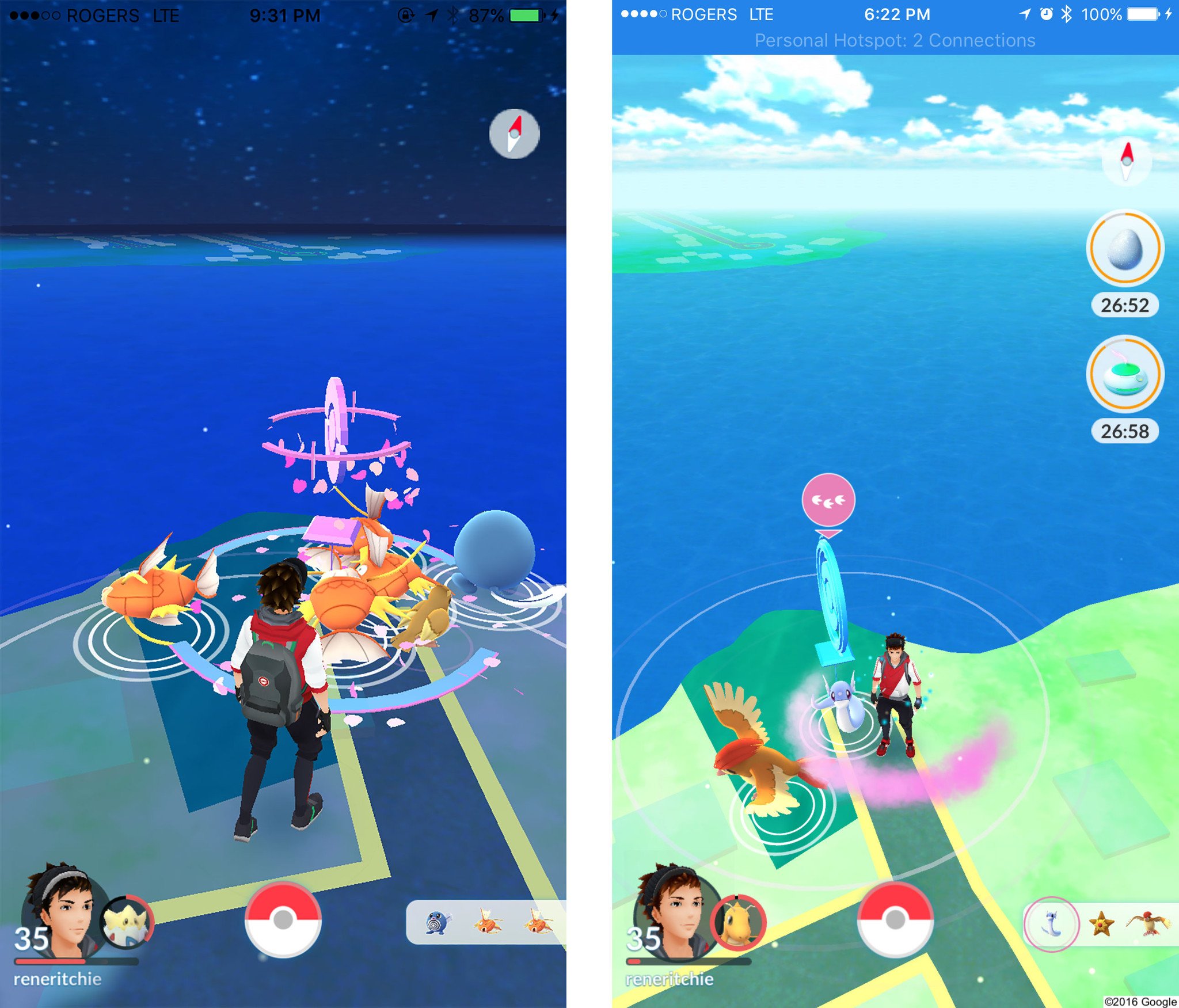
Dratini haven't nested since the very first weeks of the game. They can be found, albeit rarely, at water spawns.
If you have a local water spawn or several that gets frequent and multiple Magikarp, odds are you'll get infrequent Dratini as well. That includes PokéStops and cluster spawns near docks, piers, along rivers and lakes, etc.
Those are all are among the best places to walk and hope for Dratini.
Larvitar?
Even more rare than Dratini at the moment. They can spawn anywhere though seem to mostly spawn around mountain biomes.
What about Magnamite?
If you want that electric-type medal, you want Magnamite. You're best chance is electric biomes. Typically big power centers on big building like college or university campuses or sports complexes.
What about Snorlax, Dragonite, and Lapras?
No nests, but they often appear in the same areas once a day or once a week. Each has their own environment, like Lapras near water or Dragonite in the mountains, but they also spawn in densely populated areas like cities. In my city, they seem to love the Olympic Stadium and Botanical Gardens downtown.
The best way to find out where the super-rare Pokémon hang out in your area is to make friends with other trainers, join local Pokémon Go Facebook groups, and get onto IM groups that ping everyone when they see that Snorlax spawn at the park.
Ditto — a little help?
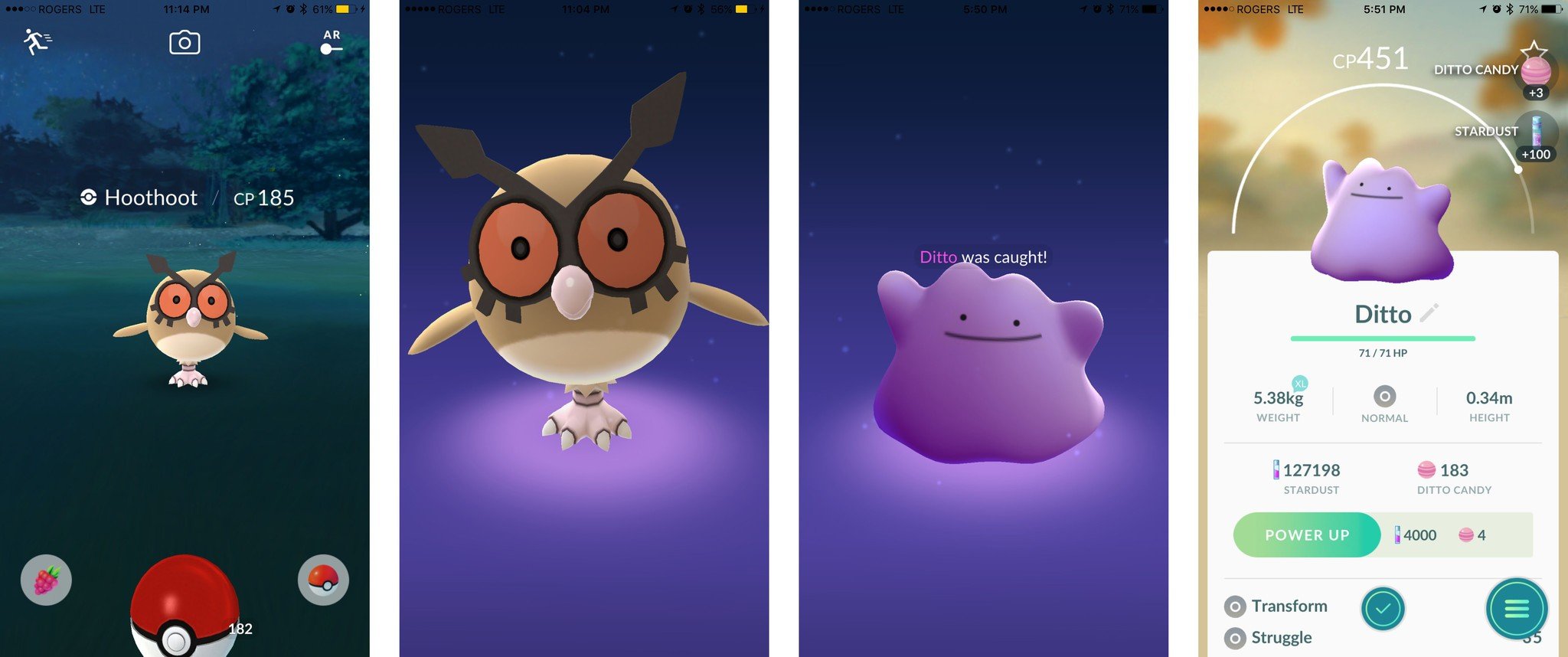
Ditto can transform into other Pokémon and, so far, he's only being encountered in the wild in his transformed state. That means you can't see Ditto on Nearby or Sightings, and you won't know if he's spawned right next to you — you'll just see a Rattata, Pidgey, Magikarp, or Zubat with no visual or audible clue that they're anything other than they seem... until you catch them.
It's only then you'll be greeted with an "Oh?" instead of a "Gotcha!" and he'll be revealed as Ditto.
See how to find and catch Ditto in Pokémon Go
What about Shiny Pokémon?
So far, only two Shiny Pokémon have been made available:
- Magikarp
- Gyarados
Sadly, while a Magikarp or Gyarados will show up on Nearby if it's attached to a PokéStop, or Sightings if it's not, it'll always look totally normal. It's only revealed as a Shiny when you tap on it and go to the catch screen. Then, boom — gold Magikarp or red Gyarados.
Unlike Ditto, though, a Shiny isn't a Shiny for everyone. It's determined on a player-by-player basis. That means you and a friend can both catch the same Magikarp, yours could turn out to be Shiny, and theirs... not.
So, if you see a normal, orange Magikarp on Nearby or Sightings, don't discount it — once you tap on it, it could be a Shiny.
Can nests ever go away?
It's hard to tell. Some PokéStops and Gyms don't see to ever spawn at all. Other times nests just get taken over by incredibly common Pokémon for two weeks, like Caterpie or Krabby, and can seem like they went away.
The best thing to do is wait a couple weeks and check again.
What about map tracker apps and websites?
Pokémon Go has really cracked down on those over the last few months leading to many of them simply shutting down. If there's a working tracker app or website for your area, and you don't think it takes all the fun out of the game, more power to you.
Your local Pokémon Go Facebook group is a good place to find out about what works, what doesn't, and what the risks are for using tracker maps in your area.
Are there any rare Pokémon you just can't find?
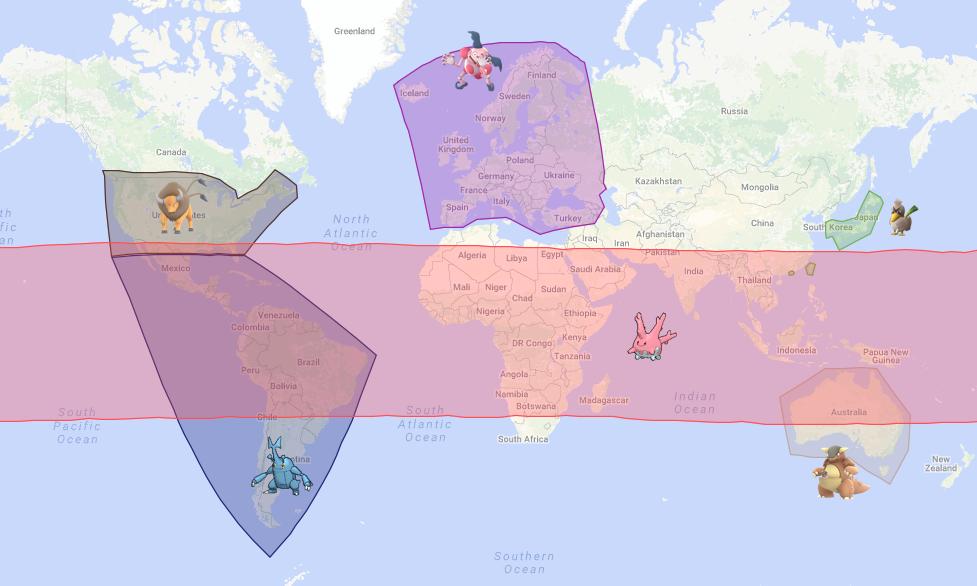
Beyond the Mythical and Legendary Pokémon that just aren't in the game yet, there are some regional exclusives. If you live outside those areas, you'll never see those Pokémon on Sightings or Nearby.
- Taurus: U.S. and Southern Canada
- Mr. Mime: Western Europe
- Farfetch'd: Hong Kong, Japan region
- Kangaskhan: Australia
- Haracross: Central and South America
- Corsola: Between the tropics.
There are also some Gen 2 Pokémon that haven't been found yet, including:
- Smeargle
- Delbird
It's possible they'll be like Ditto in Gen 1 and released at some later point.
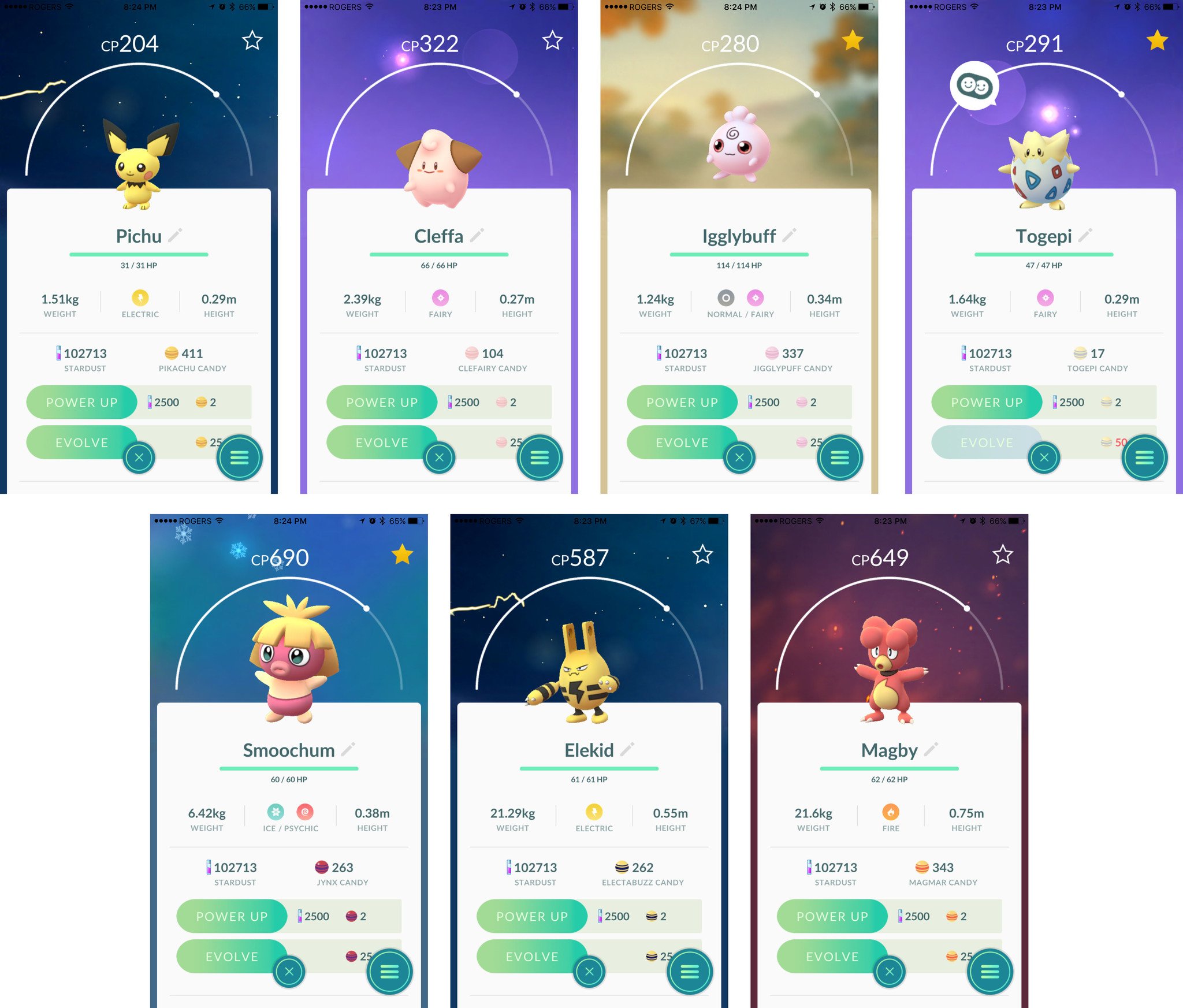
The Gen 2 babies currently don't spawn at all and so can only be obtained by hatching them from eggs. That includes:
- Pichu (baby Pikachu)
- Togepi (baby Togetic)
- Cleffa (baby Clefairy)
- Igglybuff (baby Jigglypuff)
- Magby (baby Magmar)
- Smoochum (baby Jinx)
- Elekid (baby Electobuzz)
- Tyrogue (baby Hitmonlee, Hitmonchan, Hitmontop)
See how to hatch Pichu, Togepi, and Gen 2 babies in Pokémon Go!
Any Pokémon Go Nearby or Sightings tracking questions?
If you still have questions about how to track and find Pokémon in Pokémon Go, especially the rare ones, ask in the comments below!

Rene Ritchie is one of the most respected Apple analysts in the business, reaching a combined audience of over 40 million readers a month. His YouTube channel, Vector, has over 90 thousand subscribers and 14 million views and his podcasts, including Debug, have been downloaded over 20 million times. He also regularly co-hosts MacBreak Weekly for the TWiT network and co-hosted CES Live! and Talk Mobile. Based in Montreal, Rene is a former director of product marketing, web developer, and graphic designer. He's authored several books and appeared on numerous television and radio segments to discuss Apple and the technology industry. When not working, he likes to cook, grapple, and spend time with his friends and family.

